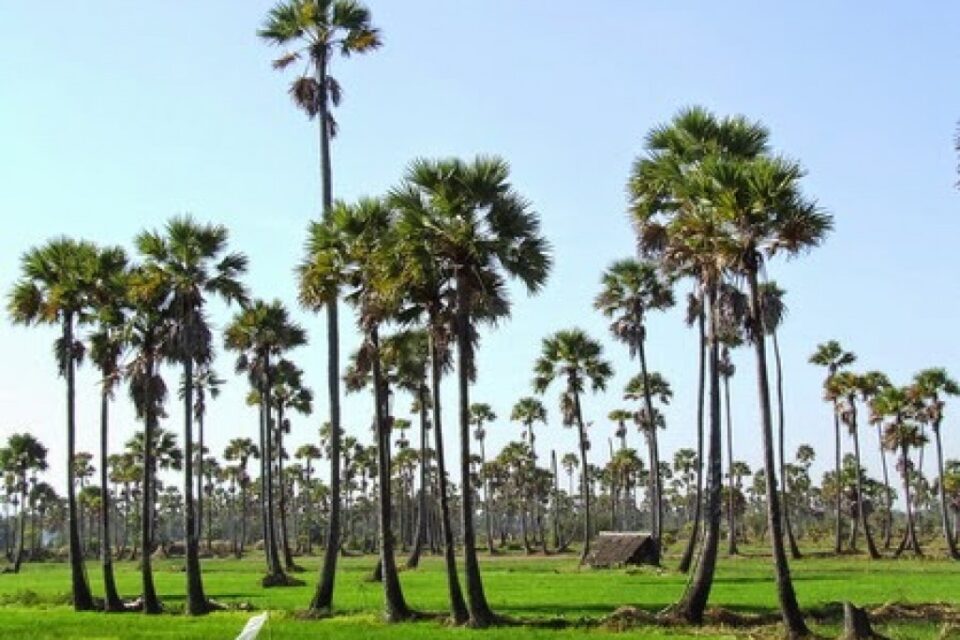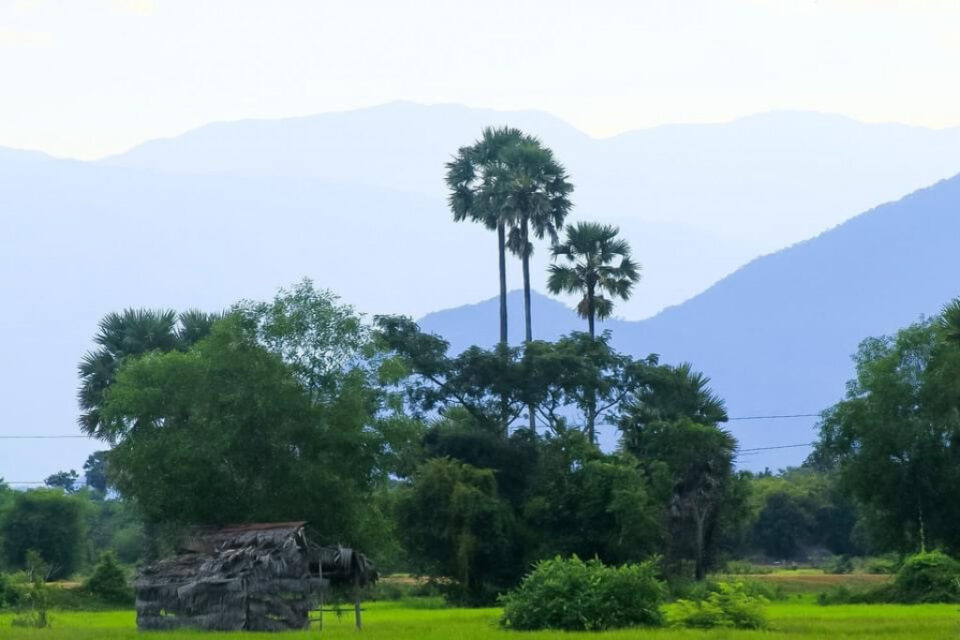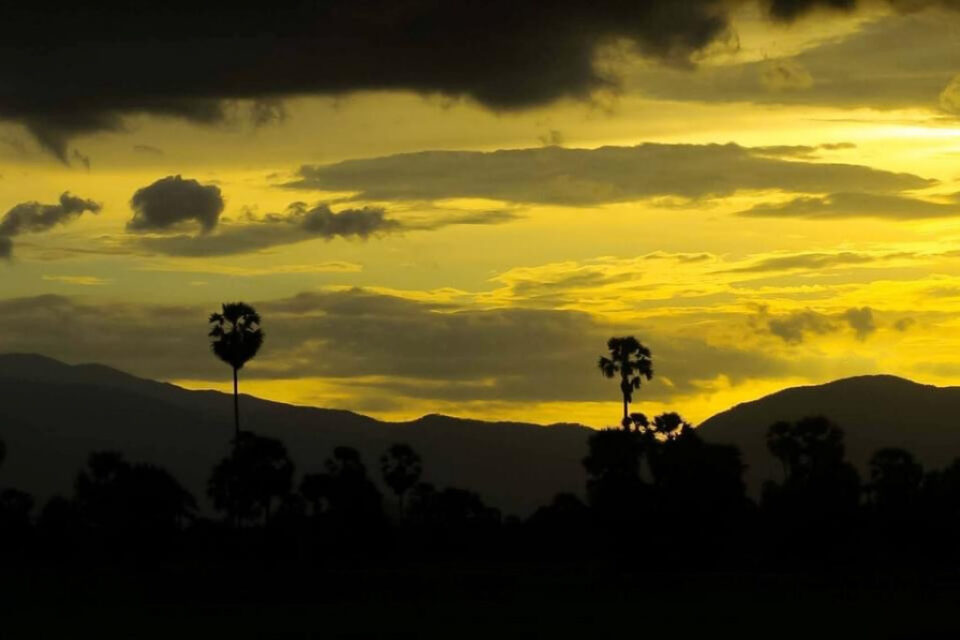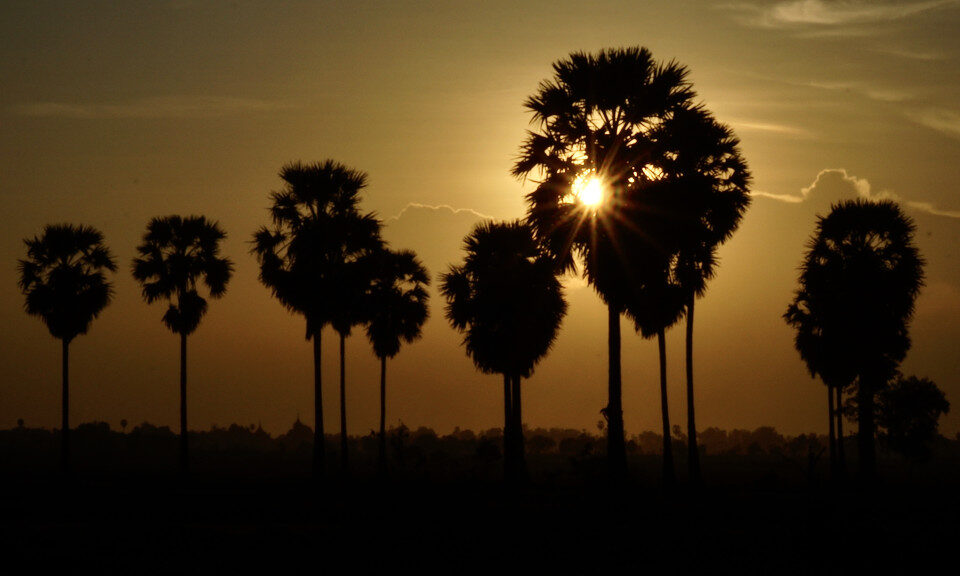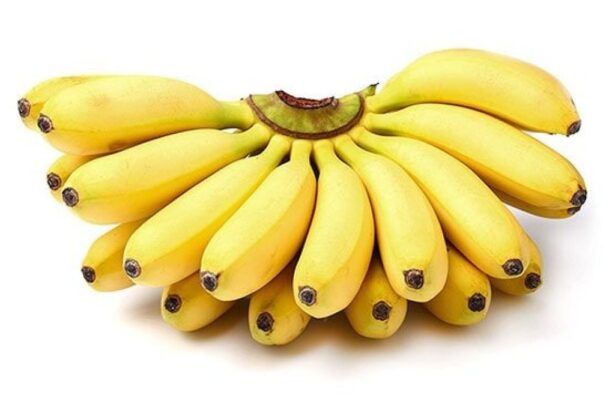The palm tree is a kind of plant that has been widely grown in Cambodia for a long time ago. The palm tree, commonly known as Borassus flabellifer in scientific name and in Khmer called “Thnoat”, is native to the Indian subcontinent (South Asia) and Southeast Asia, including Nepal, India, Bangladesh, Sri Lanka, Cambodia, Lao, Burma, Thailand, Vietnam, Malaysia, Indonesia, and the Philippines.

It is a robust tree and can reach a height of 30 meters. The trunk is grey, robust, and ringed with leaf scars; old leaves remain attached to the trunk for several years before falling cleanly. The leaves are fan-shaped and 3 meters long, with robust black teeth on the petiole margins. It is dioecious with male and female flowers on separate plants. The male flowers are less than 1 centimeter long and form semi-circular clusters, which are hidden beneath scale-like bracts within the catkin-like inflorescences. In contrast, the female flowers are golf ball-sized and solitary, sitting upon the surface of the inflorescence axis. After pollination, these blooms develop into fleshy fruits 15 to 25 cm wide, each containing 1 to 3 seeds. The fruits are black to brown with sweet, fibrous pulp and each seed is enclosed within a woody endocarp. Young Palmyra seedlings grow slowly, producing only a few leaves each year (establishment phase), but at an as yet undetermined time, they grow rapidly, producing a substantial stem.
What is Cambodia’s National Tree? Understating to Nature of Palm Tree
Borassus flabellifer is a scientific name of Palm Tree. If you are planning to have a trip to South Asia and Southeast Asian countries, especially Cambodia, you may stop and embrace with the impressiveness of these trees. It’s only fitting that Thnoat or Palm Tree has an attractive figure and noteworthiness as a national tree to the Cambodians.
Palm Trees are grown across Cambodia. Being the national tree, the Palm Tree must have extraordinary beauty and an imperative place in livelihood of Cambodian people. Cambodians considered palm trees as a national identity because it shows the extent of Khmer territory since ancient times till today, and it is thought to be their home. In 2003, His Majesty, the King of the Kingdom of Cambodia requested the Royal Government of Cambodia to examine and take actions to control and prevent destruction of natural resources such as forest and palm trees; and later on, the Ministry of Agriculture, Forestry, and Fisheries issued advice circulation letter no. 481 dated on September 5, 2003 to take prevention measures of transport and exploitation of palm trees. Palm trees grow in lowland areas because the palm trees do not shade and cannot live long enough to make the water. In Cambodia, the province that has a lot of palm trees is Kampong Speu. Palm trees is strong and provide many benefits to all Cambodians from root to top as we can use them to processing as needed such as materials used, Khmer cake, and foods. In 2005, His Majesty King Norodom Sihamoni issued a Royal Decree proclaiming Thnoat Tree as the Cambodian National tree.
Stem and Leaf
The bunch of leaves is a fan form and clustered on the top of the tree. Midrib of palm tree is thick and smooth: has yellow-green color when it is young; yellow-brown color when it is older, and thorns along both edges in the form of chainsaw teeth.
Flowers
Male and Female flowers of sugar palms are differentiated morphologically. Male flower of sugar palm has long and rounding form with size of 2 to 4 centimeters and length of 30 to 50 centimeters, whereas female flower has a form of rounding fruit with the length of 50 to 70 centimeters which yield fruits from 20 to 50.
Fruit
Palm fruit is round and dark-brown color on the bottom part and green color on the top; and changes the color to dark-yellow when it ripens. The diameter of the palm fruit is 13 to 20 centimeters which varies according to the quality of the soil, the exploitation of palm juice, and the age of the trunk.
Trunk
Its trunk is very strong and large size; therefore, Cambodians prefer to take it as a boat, a wall, fences, cordage and brushes (its wiry fiber suitable for cordage and brushes). The black timber is hard, heavy, and durable and is highly valued for construction. In Cambodia, the trunks are also used to make canoes and furniture such as tables, chairs, beds, etc.
What Makes This Cambodian National Tree Different?
Palm is a popular plant representing Khmer society, it provides many advantages to Khmer nation since the early built of the Kingdom; and it is an identity that Khmer people recognize as a view of their territory since the ancient time until present with an expression that “Palm tree is a shelter of Khmer house”. If we compare palm tree to human, we see that it is a kind of people who provide more benefits to society which can resist the enemy in all situations, patience and an invaluable resource. Thanks to these benefits, the palm tree is well-known in Cambodia and it can help to improve the lives of Khmer people. All Cambodians know this plant very well, on one don’t know. The palm is deeply injected into the hearts of Cambodians.
Benefits of Using Thnoat Tree – National Tree of Cambodia
Traditional Medicines
In Khmer society, palm tree has many advantages which include roots and male flowers of palm used for traditional medicine to cure malaria, sexual diseases, anesthesia of hand and leg.
Construction and Decorative Items
Palm tree can be used for construction of houses, shelter for animals, boats, construction materials, utensil equipment like plates, pots, spoons, folks, trays, tiffin carriers, mortars, pestles, teacup sets, and furniture materials like Tables, Closets, Beds, etc. Currently, palm tree has been used as valuable crafting production in the market. Leaves for roof and wall of the houses, braiding mats, hats, boxes or trunks, and sometime can be used for inscribing or writing in replacement of Carypha umbraculifera too, and souvenir things. The stem of the leaves (Midribs) can be peeled off and be used as rope and also used to weave into cots.
Food and Beverages
Palm Juice is taken from its flowers by taking a wooden pipe to bind to its flower and cut its flowers in order to make the juice flow into the pipe till full. Then, we can take it down from the tree. There are two types of palm juice such as sweet palm juice and sour palm juice. Sour palm juice can be used as an alcohol, and can be used as needed, especially for parties. Sour juice can be poured into a jar or container to make as vinegar. While sweet palm juice, it can be produced as sugar palm for cooking and selling, and its sweet juice can be used to quench thirst and fill our energy. It has a sweet and delicious taste. Its fruit and juice have delicious taste and it is popular within Khmer society. The production of sugar from palm tree juice is a tradition of Khmer People since ancient time until present.
Unripe fruit can be eaten (The fruit measures 10 centimeters (3.9 inches) to 18 centimeter (7.1 inches) in diameter, has a black husk, and is borne in clusters. The top portion of the fruit must be cut off to reveal the sweet jelly seed sockets, translucent pale-white, similar to that of the Lychee but with a milder flavor and no pit. The sweet jelly seed sockets occur in combinations of two, three or four seeds inside the fruit. The jelly part of the fruit is covered with a thin, yellowish-brown skin. These are known to contain watery fluid inside the fleshy white body), because they are delicious and also served as dessert and food vegetable, like Bobor Thnoat, Sam Lor Korko Thnoat (Palm fruit Soup). When it ripe can be used as a dessert or cake such as Num Akor Thnoat and Num Ansorm Thnoat. In addition, the palm seeds are grown in a nursery for a week to 10 days in order to make Palm Nut. Then, they are cut in half to take out the Palm Nut to eat or caramelized with sugar.
Thnoat Tree is Widely Spread Out To Various Aspects
Sales For Living
Individuals who live in the rural areas are constantly depending on Thnoat tree to trade for a livelihood. For instance, Fresh Fruit for sales.
Names of Places Are Attached With This Tree
Thnoat is a word that appears in the identities of many locations in Cambodia. For example, Thnoat Commune of Baty district, Takeo province; Thnoat commune of Kanhchriev district, Prey Veng Province; and Thnoat commune of Kampong Ror district, Svay Rieng Province.
Song and Literature
Thnoat tree is a prominent theme in Khmer art and literature because of its significance and robust appearance. Song title like Touk Thnoat “Palm Boat” by Mr. Sin Sisamouth, Sneha Nak Lerng Thnoat “Thnoat Love Story” by Mr. Noy Vanneth and Mrs Meng Keopichenda, and Khloy Sne Thoant Te by Mr. Preab Sovath, are the creations of Cambodia authors. Poem title like Derm Thnoat (Thnoat Tree) is written by Mr. Koy Piseth and Atha Bro Yorch Nei Derm Thnoat (The benefits of Thnoat Tree) is written by Mr. Kong Lay.
Decoration in Public Places
If you are looking for Thnoat Tree, there is a high change that they are naturally grown at the rural area. They may be commonly grown in public places like pagodas, streets and parks as well private gardens and tourism business establishments like resorts and hotels.
Why Thnoat Tree is The National Tree in Cambodia?
Cambodians love Thnoat Tree because it represents their citizens’ souls (especially farmers) and energetic attitude. With some understanding of its rich and captivating background, you will learn to appreciate the Cambodian people’s energetic and positive outlook and appreciate why they chose a simple but beneficially tree to stand as a national tree.


